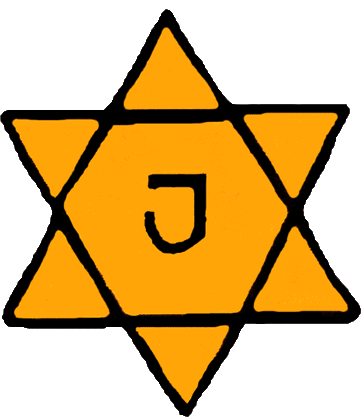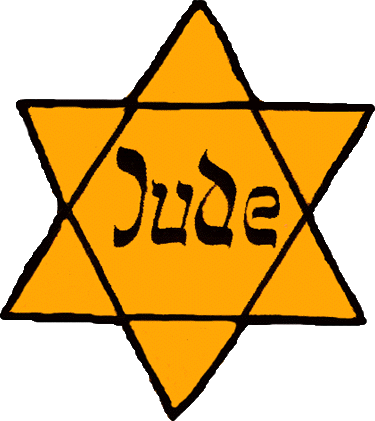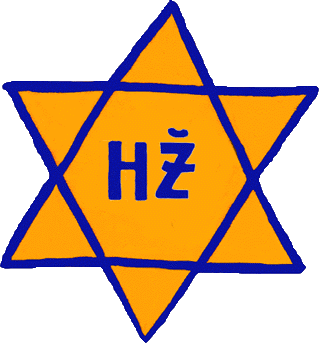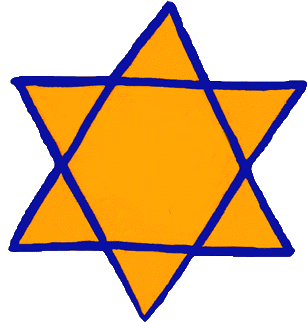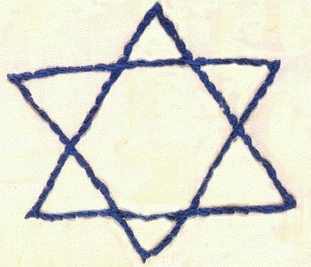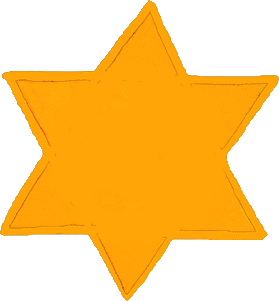Jewish Badges During The Holocaust: Photographs & Overview
In November 1939, one year after Kristallnacht, the Nazi government followed the recommendation of leader Reinhard Heydrich and first introduced mandatory ID badges for Jews in Poland. It was announced that "severe punishment is in store for Jews who do not wear the yellow badgeon back and front."
This Nazi policy was one of the tactics used to isolate Jews from the rest of the population and it enabled the Nazi government to identify, concentrate and ultimately murder the Jews of Europe. Helmut Knochen, chief of Security Service & the Security Police in France and Belgium, stated that the yellow badge was "another step on the road to the Final Solution."
The following are replicas of the badges worn by Jews across Europe:
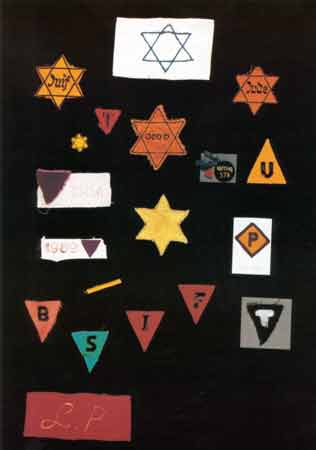 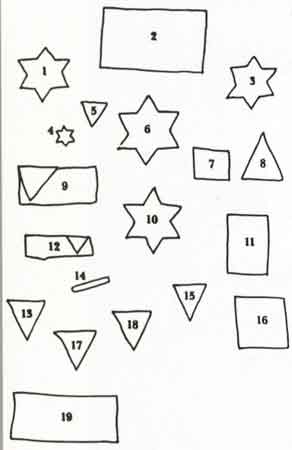 | 1) Star of David with the French word Juif (Jew). France, 1942. (1989.045.01) (2) Star of David armband, General Government, ca. November 1939-May 1943. (1990.051.08) (3) Star of David with the German word Jude (Jew), Czechoslovakia. (1989.205.0 1) (4) Star of David button, Bulgaria, 1942. (1991.135.01) (5) Red triangle embroidered with black initial "T" for Tschechoslowakei (to indicate wearer was Czech). (1989.303.27) (6) Star of David with the Dutch word Jood (Jew), The Netherlands, 1942. (1990.145.01) (7) Identification tag issued to Bronia Eiger-Sitner, a Jewish forced laborer at a munitions factory in Radom, Poland, ca. 1944. Attached to identification tag with blue string are a 40 red plastic heart and a mezuzah (a Jewish ritual scroll). Gray paper background is used for photographic purposes, (1919.171.11) (8) Yellow triangle with "U" (Ungarn or Hungary), Buchenwald, April 1945. (1989.295.07) (9) Purple triangle with prisoner number 46436 issued in Sachsenhausen to Albert Jahndorf. (1989.240.02) (10) Star of David used in Hungary, March 1944. (1988.064) (11) Patch used to identify a Polish civilian laborer in the German Reich, 1940-1945. (1990.259.02) (12) Purple triangle with prisoner number 1989 issued in Ravensbruck to Luise Jahndorf (1989.240.01) (13) Pink triangle with the letter "B" (Belgium) from Langenstein-Zwieberge, also known as" Malachit," a subcamp of Buchenwald, ca. 1944-1945. (1991.198.08) (14) Yellow strip of cloth placed above inverted triangle marking Jews in Monowitz, November 1944. (1991.198.04) (15) Red triangle with "F" (France), Buchenwald, April 1945. (1989.295.03) (16) Black triangle with "T" (Czechoslovakia) from Langenstein-Zwieberge, also known as"Malachit," a subcamp of Buchenwald, 1944-1945. Gray paper background is used for photographic purposes. (1991.198.12) (17) Green triangle with "S," Buchenwald, April 1945. "S" probably meansSicherheitsverwahrter or preventive arrest prisoner. (1989.295.10) (18) Red triangle with "I" (Italy), Buchenwald, April 1945. (1989.295.04) (19) Armband embroidered with "L.P." (Lagerpolizei) from Malchow, a labor subcamp of Ravensbrück concentration camp producing ammunition and explosives, February-May 1945. (1988.082.03) | ||
Sources: Holocaust Memorial Center (info@holocaustcenter.org)

